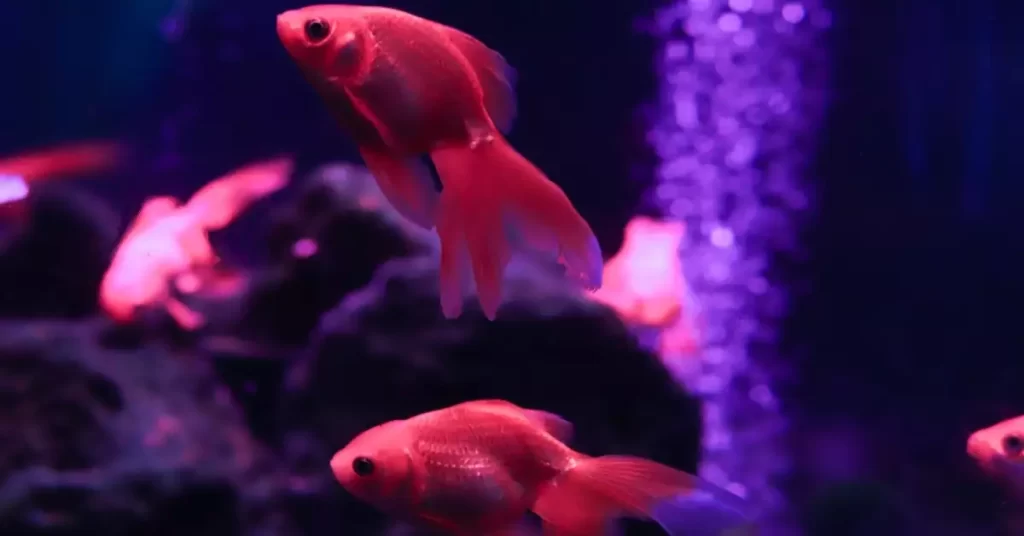Fish, just like humans, possess the ability to see light and colors. The way they perceive the world around them can greatly affect their behavior and survival.
One particular color that has generated curiosity and discussion is a red light. In this article, we will delve deep into the topic of fish vision and answer the question: Can fish see red light?
Introduction to Fish Vision
Fish have a fascinating and complex visual system that allows them to perceive their surroundings in ways that are unique to their aquatic environments.
The vision of fish is determined by several factors, such as the structure of their eyes, the presence of photoreceptors, and the nature of the light present in their habitat.
Color Perception in Fish
Fish have color vision due to the presence of specialized cells in their eyes called cones. These cones are sensitive to different wavelengths of light, allowing fish to perceive a wide range of colors.
The sensitivity of cones varies among different fish species and can be influenced by factors such as water depth, habitat, and lifestyle.
The Role of Red Light in Aquatic Environments
The penetration of light into water is influenced by its wavelength. In general, longer wavelengths such as red light are absorbed more quickly, resulting in a rapid decrease in intensity with depth.
This means that red light is rarely present in deeper aquatic environments, and fish living in such habitats may not be exposed to it as often as other colors.
How Fish Detect Red Light
For fish to see red light, they must possess cones sensitive to long wavelengths. However, not all fish species have the same types of cones in their eyes.
Some fish have cones that are more sensitive to red light, while others may lack these cones entirely, affecting their ability to see red light.
Fish Species That Can See Red Light
Several fish species have been found to possess the ability to see red light. Some examples include:
- Goldfish
- Zebrafish
- Salmon
- Rainbow trout
These fish have been shown to possess cones that are sensitive to longer wavelengths, allowing them to perceive red light effectively.

Fish Species That Cannot See Red Light
On the other hand, some fish species lack the necessary cones to detect red light. Deep-sea fish, for example, often do not possess cones sensitive to red light due to the scarcity of this wavelength in their environment. Some examples of fish that cannot see red light include:
- Lanternfish
- Deep-sea anglerfish
- Hatchetfish
Red Light Applications in Aquariums
In the world of aquariums, red light has become increasingly popular for a variety of reasons. Some benefits of using red light in aquariums include:
- Reduced stress for fish
- Enhanced coloration
- Simulating natural environments
- Encouraging natural behavior
These benefits make red light an attractive option for many aquarium enthusiasts.
The Impact of Red Light on Fish Behavior
The presence of red light can have significant effects on fish behavior. For fish species that can see red light, it can be used as a means of communication, mate selection, or camouflage. Additionally, red light can help fish navigate their environment and locate food sources.
Red Light and Fishing Techniques
Some anglers use red light to their advantage in various fishing techniques.
For example, red light can be used in night fishing to attract certain fish species without disturbing others, as it is less likely to be perceived by fish that cannot see this wavelength.
Additionally, some lures incorporate red light-emitting diodes (LEDs) to mimic the color patterns of prey, making them more appealing to predatory fish.
Frequently Asked Questions
1. Why is red light absorbed more quickly in water?
The absorption of light in water is influenced by the light’s wavelength. Longer wavelengths, such as red light, are absorbed more quickly due to the interaction between light and water molecules.
This leads to a rapid decrease in red light intensity with increasing depth.
2. Can all fish see the red light?
No, not all fish can see red light. The ability to see red light depends on the presence of specific cones in a fish’s eyes that are sensitive to longer wavelengths.
Some fish, particularly those living in deeper aquatic environments, may not possess these cones and therefore cannot see red light.
3. How does red light affect fish behavior?
Red light can have various effects on fish behavior, depending on the species and their ability to perceive it.
For fish that can see red light, it may play a role in communication, mate selection, camouflage, navigation, and locating food sources.
In aquarium settings, red light has been found to reduce stress and encourage natural behavior in some fish species.
Conclusion
In summary, the ability of fish to see the red light is determined by the presence of specific cones in their eyes that are sensitive to longer wavelengths.
Some fish, particularly those living in shallow aquatic environments, can see red light effectively, while others, such as deep-sea fish, may not be able to perceive it at all.
The presence of red light can have significant effects on fish behavior, and it has been used in various applications, including aquariums and fishing techniques.
As we continue to learn more about fish vision and the role of red light in their lives, we can better understand and appreciate these fascinating creatures and their unique ways of perceiving the world around them.